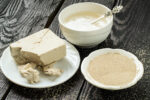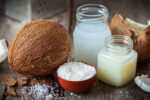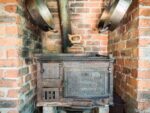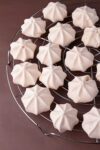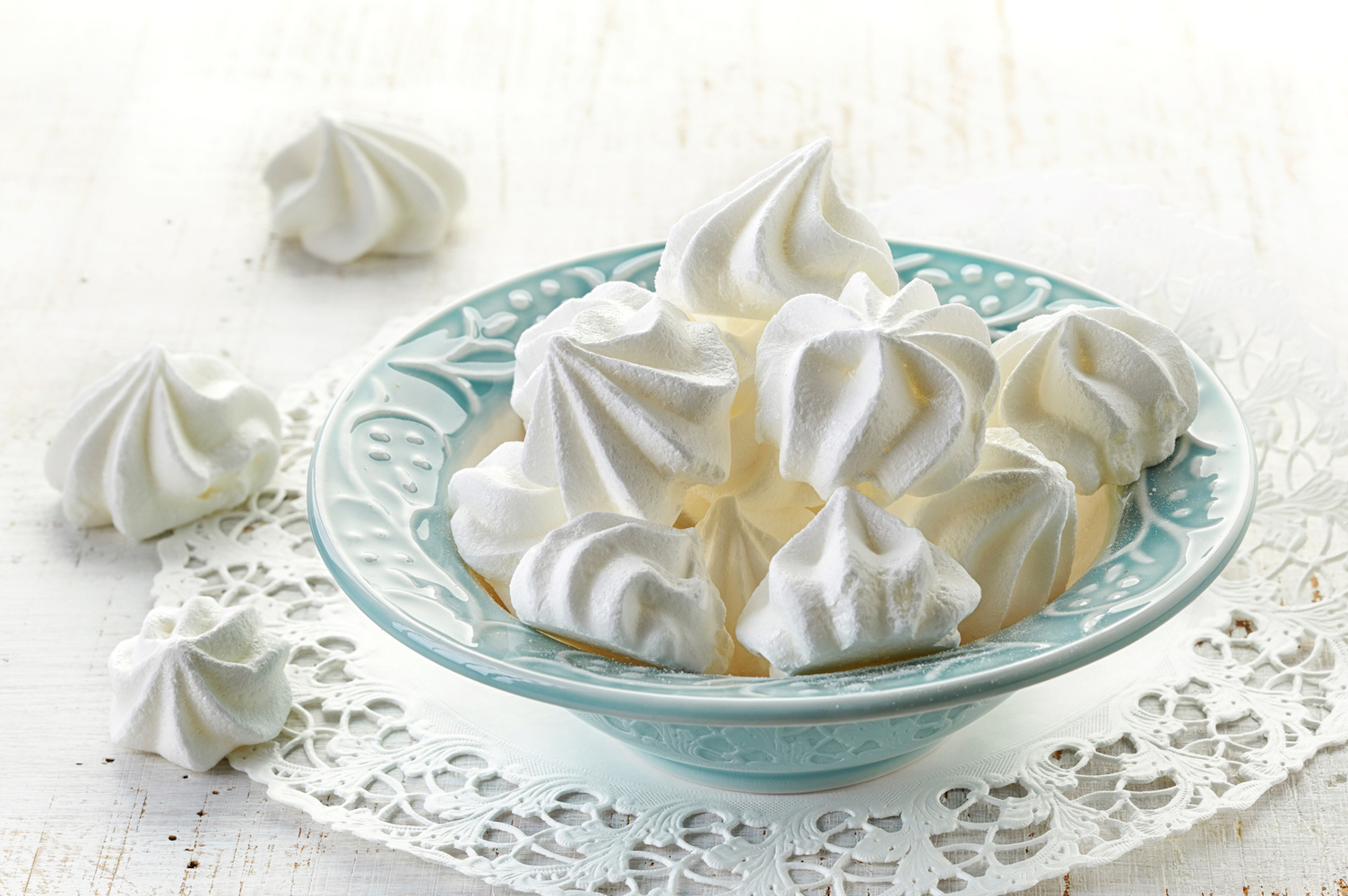
How to Make Meringue for Pies and Candy
Meringue for pie or candy is made with egg whites, which have to be whipped enough to make them airy and light. Egg whites were whipped by hand in the 1800s and was a time-consuming chore. Hand-operated rotary egg beaters were introduced around 1860, but didn’t really become popular in the United States until the Dover Stamping Company created their own version. Between 1870 and 1890, Dover made 4 million egg beaters, mostly for family use.
INFORMATION BELOW FROM 1800s COOKBOOKS
PIE MERINGUE
Beat whites of eggs for meringue with a woven wire spoon or silver fork until stiff. Add one-half to one tablespoon of sugar to each white and beat till very stiff, then add flavoring. Pile in rocky form onto a hot pie, bringing the meringue well out over the crust. Brown delicately on the top grate of a moderate oven.* As soon as the tips are tinted, the meringue is done. Over-baking makes it tough and causes it to draw away from the edges.
Having the pie hot when the meringue is put on helps to cook it more evenly and keeps it from becoming watery next to the pie. After baking lemon pies, tiny dots of beaten jelly may be placed with a pastry tube in the depressions of the meringue. In cutting pies with a meringue, cut just through the meringue first with a thin-bladed knife dipped in cold water; afterwards cut to the bottom.
*moderate oven – about 350-400 degrees Fahrenheit.
DRY MERINGUES IN THE FORM OF EGGS
You need ten whites of eggs and twelve ounces of sugar. Obtain the newest laid eggs and carefully separate the white from the yolk. The quality of the meringues will depend on the eggs being well whipped to a very strong froth and also on the quantity of sugar, for if there is not enough, they will eat tough.
Put the whites into a pan which must be quite free from grease. Whisk them to a very strong froth so as it will support an egg, or even a greater weight. Have the sugar pounded and sifted through a hair sieve,* and mix it as lightly as possible. Then lay the mixture on thick white paper well buttered, or bread grated on it to prevent the cakes sticking.
With a table or dessertspoon,* drop the mixture in the shape of a half egg onto paper, spacing about two inches apart. Dust them with fine powdered loaf sugar,* blow off all that does not adhere, cover them with paper, and put them into a cool oven to bake until they are a nice light brown. If the oven should be too warm, the surface gets dry or hardened.
When they are firm to the touch, take them out and take them off with a knife. Scoop out the middle into which put preserves; if the fruit is rather acid, the better. Put them again in the oven to dry. When done, fasten two together with a little white of egg. Send to table on a fancy dish.
*hair sieve-a strainer with a wiry fabric bottom usually woven from horsehair.
*dessertspoon – two teaspoons.
*loaf sugar – sugar sold in a hard block, which has to be broken and then pounded into sugar granules.
ROSE MERINGUES
Beat to a stiff froth the whites of six eggs. Then beat in by degrees, a spoonful at a time, a pound or more of finely-powdered loaf-sugar, till it is of the consistency of very thick icing or meringue. Have ready a sufficient quantity of freshly-gathered rosebuds, about half grown. Having removed the stalks and green leaves, take as many of the buds as will weigh three ounces. With a pair of sharp scissors, clip or mince them as small as possible into the pan of meringue, stirring them in with a spoon. Then stir the whole very hard.
Have ready some sheets of white paper laid on baking tins. Drop the meringues on it in heaps all of the same size and not too close together. Smooth them with the back of a spoon or broad knife, dipped in cold water. Set them in a moderate cool oven and bake them about twenty minutes. Take out one and try it and if not thoroughly done, continue them longer in the oven. To heighten the red color, add to the white of egg before you beat it, a very little water in which has been steeped a thin muslin bag of alkanet-root* or you may color it with a little cochineal* powder.
Orange-blossom meringues may also be made as above.
*alkanet-root – a source of red dye from a plant in the borage family.
*cochineal – a red dye made of the dried and pulverized bodies of female cochineal insects.
WHIPPED CREAM MERINGUES
Take the whites of eight eggs and beat them to a stiff froth that will stand alone. Then beat into it gradually, a teaspoon at a time, two pounds or more of finely-powdered loaf-sugar, continuing to add sugar till the mixture is very thick. Finish with a little lemon-juice or extract of rose.
Have ready some sheets of white paper laid on a baking-board and with a spoon, drop the mixture on it in long oval heaps, about four inches in length. Smooth and shape them with a broad-bladed knife, dipped occasionally in cold water.
The baking-board used for this purpose should be an inch thick and must have a slip of iron beneath each end to elevate it from the floor of the oven so that it may not scorch, nor the bottoms of the meringues be baked too hard. This baking-board must not be of pine wood, as a pine board will communicate a disagreeable taste of turpentine.
The oven must be moderate. Bake the meringues of a light brown. When done, take them off the paper by slipping a knife nicely beneath the bottom of each. Then push back or scoop out carefully a portion of the inside of each meringue, taking care not to break them.
Have ready some nice whipped cream, made in the following proportion:
Take one-fourth pound of broken-up loaf-sugar and on some of the lumps, rub off the yellow rind of two large lemons. Powder the sugar and then mix with it the juice of the lemons, and grate in some nutmeg. Mix the sugar with a half-pint of sweet white wine.
Put into a pan a pint of rich cream and whip it with rods or a wooden whisk, or mill it with a chocolate mill, till it is a stiff froth. Then mix in, gradually, the other ingredients, continuing to whip it hard a while after they are all in.
As you proceed, lay the froth on an inverted sieve with a dish underneath to catch the droppings. The droppings must afterwards be whipped and added to the rest. Fill the inside of each meringue with a portion of the whipped cream. Then put two together, so as to form one long oval cake, joining them nicely, so as to unite the flat parts that were next the paper, leaving the inside filled with the whipped cream.
Set them again in the oven for a few minutes. This must be done with great care and nicety, so as not to break them. Each meringue should be about the usual length of a middle finger. In dropping them on the paper, take care to shape the oval ends handsomely and smoothly. They should look like very long kisses.
Image from Deposit Photos
=================================================
Do You Like Meringue on Pies or as Candy? Please Leave a Comment Below.
=================================================
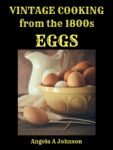 VINTAGE COOKING from the 1800s ~ EGGS
VINTAGE COOKING from the 1800s ~ EGGS
by Angela A Johnson
How did people cook and store eggs without electricity?
This book tells how to determine freshness, how to cook, and how to preserve eggs.
Recipes include Fried, Poached, Baked, and Boiled Eggs, Omelets, Soufflés, Egg Balls, Custards, Puddings, Dressing, Sauces, Creams, Drinks, and more…..
Available from these online Retailers:
Amazon, Kobo, Apple, Barnes&Noble, Scribd, 24 Symbols, Playster, Angues & Robertson, Mondadori Store, and more.
Also available as Regular Print and Large Print on Amazon.
=================================================
